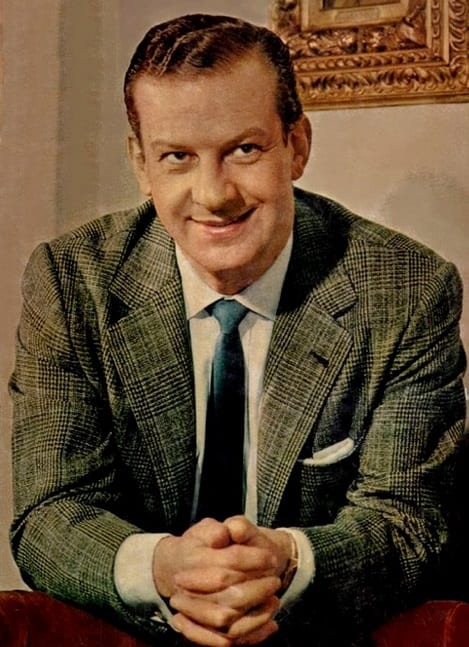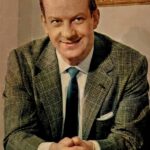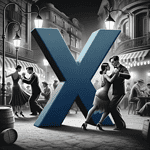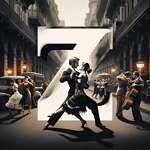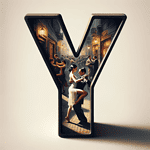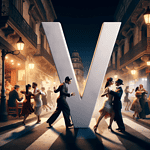Mariano Mores was a unique persona in the world of Argentine tango, contributing to its development for almost a century. His biggest influence was to bridge the gap between Tango as popular music and classical music.
As a composer, pianist, and conductor, he’s left an indelible mark on the genre, intertwining classical influences with popular rhythms to create timeless classics.
Table of Contents
Career
Mariano Alberto Martínez, better known as Mariano Mores, was a prominent Argentine musician, pianist, composer, and orchestra conductor in the Tango genre. Born on February 18, 1918, in Buenos Aires, he passed away in the same city on April 13, 2016.
Mores was a prolific composer, creating some of the most famous Tangos, including “Uno” and “Cafetín de Buenos Aires” (with Enrique Santos Discépolo), “Adiós pampa mía”, “Cuartito azul”, “Taquito militar”, “Tanguera”, “El firulete”, “El patio de la morocha” (with Cátulo Castillo), “En esta tarde gris”, and “Gricel” (with José María Contursi).
His compositions “Uno” and “Adiós pampa mía” are among the world’s ten most popular Tangos, earning him 26 gold and platinum records.
Mores began his professional career at the young age of 14, performing as piantis at Café Vicente on Corrientes Avenue and he further perfected his musical skills by taking classical music lessons at the convesatoire.
Mores’s career evolved as he joined and briefly worked with the folk group “La Cuyanita”. He then moved on to become a conductor and pianist for Roberto Firpo’s orchestra. A significant turn in his career came with the creation of the Trio Mores, alongside sisters Margot and Myrna Mores. Mariano Mores later married Myrna and adopted her artistic surname.
In 1939 he became the lead pianist with Francisco Canaro’s orchestra.
Tango between popular and classical music
In 1948, Mores left Francisco Canaro’s orchestra to pursue a career in cinema, which caused some tension with Canaro. Despite this, Mores didn’t abandon music and later returned to it with a strong presence in the film “El otro yo de Marcela”.
Tango music was always somewhere in between folklore and classical music. Many of the musicians had a sound formal education on the piano, bass and violin and often also had played in classical ensembles and were familiar with different musical styles.
Yet, Tango was considered a popular art form, or even a subversive one.
Mores had the vision of bringing Tango to big stages and into the setting of classical music, forming a large symphonic orchestra to play popular music, challenging the elitist views that strictly separated popular and “cultured” music.
This vision was particularly embodied in his work at the Teatro Colón, notably with his milonga “Taquito militar”, which symbolized the fusion of popular and “cultured” music.
In this movie from 1953, he is shown performing Taquito Militar, where he is using instruments like the clarinet and the harp which are not at the core of traditional tango orchestration.
Mores’s project during Perón’s first government was to advance symphonic tango. His style and contributions were compared to notable composers like Cole Porter and Gershwin, earning him the nickname “the Argentine Gershwin”.
His involvement played a pivotal role in opening the Teatro Colón to tango, a movement that started in the 1930s with performances by prominent tango orchestras.
However, this policy of blending popular and “cultured” music faced strong opposition from conservative groups, with critics expressing disdain for what they perceived as a degradation of the Teatro Colón’s prestige.
Mores continued to innovate in tango music, forming an orchestra that blended elements of chamber and symphonic music. He incorporated unusual musical elements in tango, like drums, percussion, choirs, and harps. His orchestra, often comprising around thirty-five musicians, included notable artists like Leopoldo Federico and Ubaldo de Lío.
In the 1960s, Mores’s concept evolved into a tango chamber orchestra, the Sexteto Lírico Moderno, which embraced synthesizers in the 1970s to deepen its symphonic line. Despite the decline of large permanent orchestras in the 1950s, Mores continued to organize large orchestras for movies and international tours.
Is Mariano Mores popular at traditional milongas?
Mariano Mores is emblematic of the Tango music of the 1950s and 1960s, a period marked by significant evolution and experimentation in Tango. This era is often characterized by a shift towards a more concert-like, listening-oriented style of Tango music.
Mores’ style, combining traditional Tango elements with more modern, orchestral influences, was distinct from the Golden Age of Tango (approximately 1935 to 1952).
Traditional milongas, especially those that adhere strictly to the Golden Age repertoire, might play less of Mores’s music, as they often focus on the classic orchestras from the 1930s and 1940s. These include the works of Juan D’Arienzo, Carlos Di Sarli, Aníbal Troilo, and Osvaldo Pugliese, among others.
However, in contemporary Tango scenes, especially outside Argentina, there’s often more openness to a wider range of Tango music. This includes not just the traditional Golden Age orchestras but also later musicians like Mores, as well as even more modern Tango Nuevo and alternative Tango tracks.
Songs by Mariano Mores that are often played at Milongas
Indeed, while Mariano Mores is a significant figure in Tango music, his compositions are often heard in milongas in interpretations by other orchestras and singers from the Golden Age of Tango. The version of “Adiós Pampa Mía” by Rodolfo Biagi with singer Alberto Amor is a great example. Here are similar recordings of Mariano Mores’s compositions, interpreted by renowned orchestras and singers, along with their recording years and reasons for their popularity in milongas:
1. “Uno” by Aníbal Troilo with Francisco Fiorentino (1943): Troilo’s deep, emotive style, combined with Fiorentino’s expressive singing, brings a unique depth to this classic, making it a favorite for its rich musicality and emotional resonance.
2. “Adiós Pampa Mía” by Francisco Canaro with Alberto Arenas (1945): Canaro’s orchestration, known for its rhythmic and melodic clarity, paired with Arenas’ heartfelt singing, makes this version a hit in milongas for its danceable quality and nostalgic feel.
3. “Cuartito Azul” by Miguel Caló with Raúl Iriarte (1941): The smooth, lyrical quality of Caló’s orchestra and Iriarte’s romantic vocal interpretation make this a popular choice for its elegance and classic Tango sentiment.
4. “Tanguera” by Osvaldo Pugliese (Instrumental, 1955): Pugliese’s dramatic and powerful interpretation of this instrumental piece is appreciated for its intense energy and dynamic range, offering dancers a compelling and engaging experience.
5. “En esta tarde gris” by Carlos Di Sarli with Jorge Durán (1945): Di Sarli’s sophisticated, refined style, combined with Durán’s deep, soulful voice, brings a unique interpretation to this melancholic Tango, making it popular for its emotional depth.
6. “Taquito Militar” by Juan D’Arienzo (Instrumental, 1952): Known for his energetic and rhythmic style, D’Arienzo’s version of this milonga is a favorite for its lively tempo and driving beat, ideal for dynamic and spirited dancing.
7. “Cafetín de Buenos Aires” by Aníbal Troilo with Edmundo Rivero (1948): Troilo’s nuanced orchestration and Rivero’s distinctive, deep voice render this song a milonga favorite for its storytelling and atmospheric quality.
These versions are popular in milongas primarily because they are performed by orchestras and singers from the Golden Age of Tango, a period highly revered in traditional Tango circles. The interpretations by these artists are often more aligned with the classic Tango sound that is preferred for dancing in milongas. They bring out the emotional depth, rhythmic clarity, and danceable quality of Mores’s compositions, making them enduring favorites in the Tango dance community.
Frequently Asked Questions
Who was Mariano Mores?
Mariano Mores was a celebrated Argentine tango composer, pianist, and conductor renowned for blending classical music with popular tango rhythms.
What made Mariano Mores significant in the tango world?
Mores’ significance stems from his ability to infuse classical elements into tango music, creating timeless pieces that have shaped the genre’s evolution and are still beloved by dancers today.
Can you name some of Mariano Mores’ iconic tango compositions?
Some iconic tango pieces by Mariano Mores include “Cuartito Azul,” “Uno,” “Adiós, Pampa Mía,” and “Tanguera.”
How do Mariano Mores’ compositions influence tango dancers?
Mores’ compositions offer a combination of technical complexity and deep emotional expression, making them central to tango dancing competitions, social dances, and exhibitions.
Will Mariano Mores’ music continue to be important in the future?
Yes, Mariano Mores’ music is expected to continue inspiring tango dancers and preserving the cultural legacy of tango for generations to come.
Mores was a celebrated Argentine tango composer, pianist, and conductor renowned for blending classical music with popular tango rhythms
